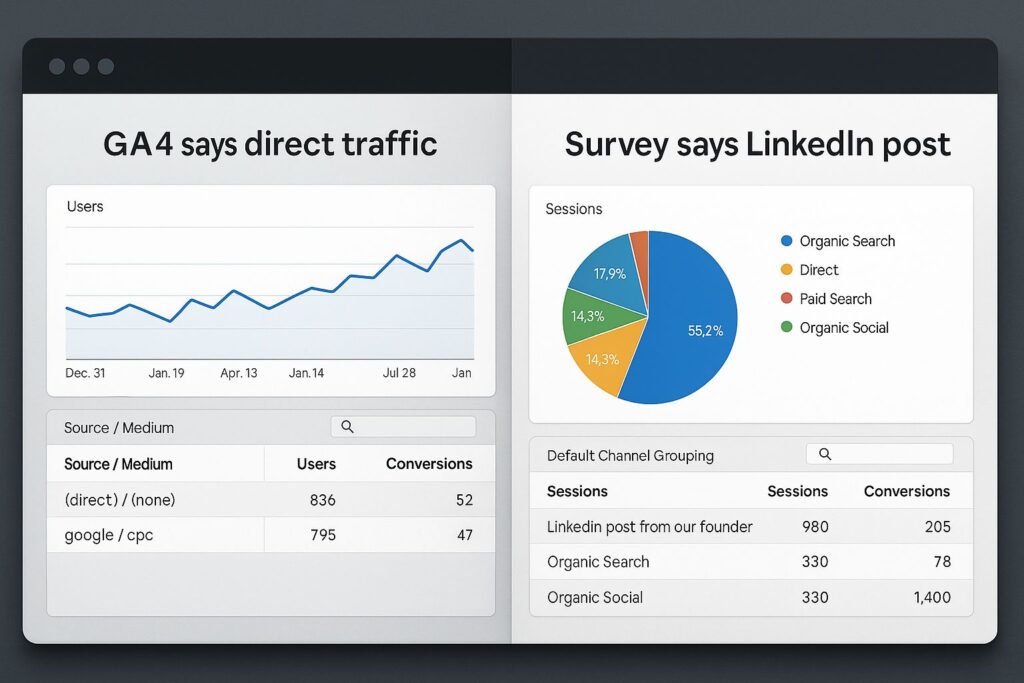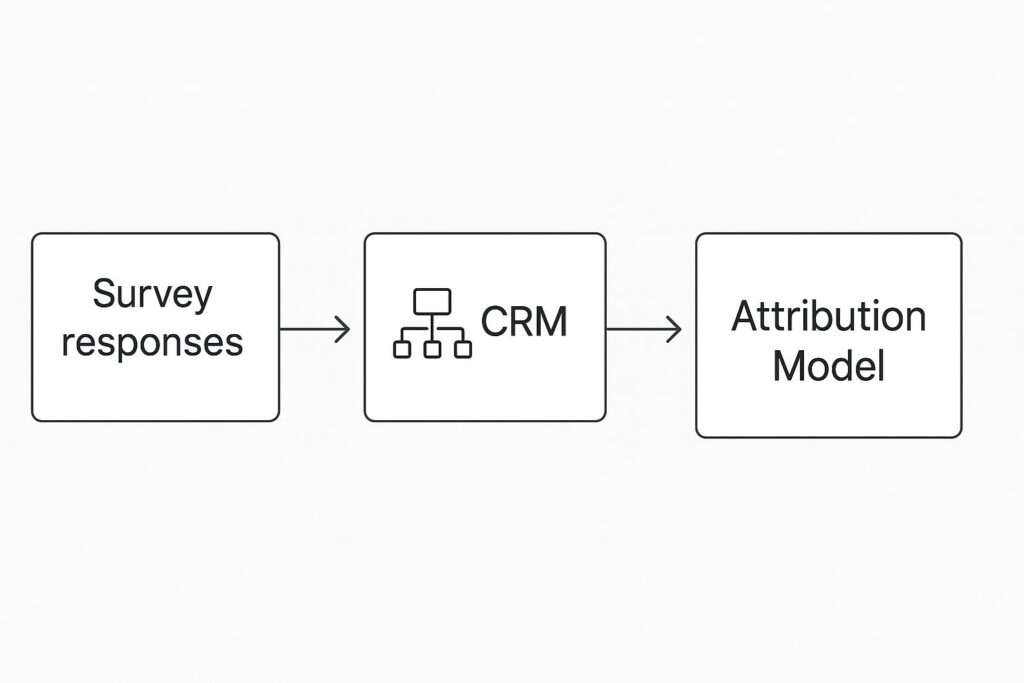
You’ve seen it. Campaign data that doesn’t add up.
Google Ads claims all the credit, GA4 shows half the conversions, and the board wants to know where the other half went.
The culprit isn’t the platforms. It’s the data gaps left behind as cookies disappear and privacy rules tighten.
The fix isn’t another tool, it’s a new kind of input: zero-party data, the information your audience willingly shares.
Zero-party data adds intent and context to the behaviors you already track, giving you a sharper, privacy-safe attribution model that still tells the whole story.
What Zero-Party Data Really Is (and Why It Matters Now)
Zero-party data is simple: it’s what customers tell you about themselves.
Surveys, preference checkboxes, quiz answers, signup forms, any time someone volunteers insight, that’s zero-party data.
It’s the opposite of third-party cookies. There’s no guessing, no scraping, no hidden tags, just transparent, opt-in information.
Why it matters:
- Privacy laws favor it.
- Platforms like Meta and Google are shifting toward it.
- Attribution models built on it are more accurate and more trustworthy.
In short, you’re not losing data, you’re upgrading the kind you use.
Why Marketing Leaders Are Turning to Zero-Party Data for Attribution
Every attribution model depends on signals. Lose a few, and your reports lose clarity.
By adding zero-party data, you replace those lost signals with something stronger: declared intent.
Example:
A SaaS team asks new trial users how they first heard about them.
GA4 says “direct traffic.”
The survey says “LinkedIn post from our founder.”
That small difference changes the budget conversation, and saves real money.

Across Y77 client audits, adding declared intent improved channel accuracy by 20-30 % in the first quarter.
How to Capture Zero-Party Data Without Killing the Experience
- Start small.
Add one question after sign-up or purchase: “What brought you here today?” - Keep it human.
Avoid long forms. People share more when it feels personal and fast. - Show the payoff.
Tell them why you’re asking, “so we can send relevant updates” works better than silence. - Connect the dots.
Send answers into your CRM or analytics system right away. Don’t let good data sit in survey tools. - Review weekly.
Treat responses like live campaign feedback, not a one-time research project.
How to Use It Inside Your Attribution Model
Step 1: Link it to your CRM or CDP
Match declared data with behavioral data from GA4 or Ads. You’ll see not just what users did but why they converted.

Step 2: Tag and label it
Use fields like “declared first-touch” or “purchase motivation” to enrich reports.
For a full breakdown of model options and channel weighting strategies, check our complete attribution tracking guide
Step 3: Train your model
Feed that combined dataset into your DDA or regression model. It sharpens predictions and keeps them privacy-compliant.
The result is a full-funnel view that’s legal, logical, and genuinely useful.
Real-World Win
A retail client used a single post-purchase survey asking, “Where did you first hear about us?”
After a month, 41 % of “direct” sales were re-attributed to organic social.
They shifted budget accordingly and lifted blended ROAS by 22 %, without touching ad spend.
That’s what happens when attribution stops guessing.
Building Your Zero-Party Framework
- Define your key touchpoints, signup, demo, checkout.
- Choose short, high-value questions for each.
- Integrate responses through tools like Segment, HubSpot, or server-side GA4.
- Audit results quarterly and refine questions as trends change.
Zero-party data works best when it’s continuous, not campaign-based.
The Bigger Picture: Privacy-Based Growth
The future of marketing belongs to teams that combine:
- Zero-party data for declared intent
- First-party data for observed behavior
- Modelled conversions for privacy gaps
This three-layer system replaces cookies with consent and delivers data you can defend.
Final Thought
Great attribution doesn’t require more tracking. It requires better context.
Zero-party data gives you that context, straight from the people you serve.
The strongest data strategies combine declared intent with machine learning insights. See how brands are already doing it in our post on AI-enhanced attribution systems.
At Y77.ai, we help marketing teams rebuild attribution systems that stay compliant, accurate, and ready for 2026.
Talk to our analytics experts →
Zero-party data is information that customers voluntarily share with a brand, such as survey answers, signup form preferences, or quiz responses. Unlike third-party cookies, it’s fully consent-based and transparent, making it ideal for privacy-first attribution models.
First-party data is collected through user actions on your site (like clicks or purchases), while zero-party data is directly declared by the user.
For example, a customer telling you their preferred product category is zero-party data, whereas their browsing history is first-party data.
Zero-party data restores lost signals in attribution models affected by cookie restrictions and privacy laws. It adds intent and context, allowing marketers to understand why conversions happen, not just where they came from, leading to more accurate ROI tracking.
Keep it simple. Use short, optional questions like “What brought you here today?” right after sign-up or purchase. Explain the value of sharing (e.g., “so we can send relevant updates”) and ensure users see the benefit immediately.
Tools like HubSpot, Segment, and server-side GA4 setups help connect survey responses to your CRM and analytics system. This integration allows real-time syncing between declared intent and behavioral data for accurate attribution.
- About Us
- Blog
- Book a Marketing Growth Call | Y77 Data Attribution Expert
- Case Studies
- Contact
- Maintenance
- Privacy Policy
- Services

